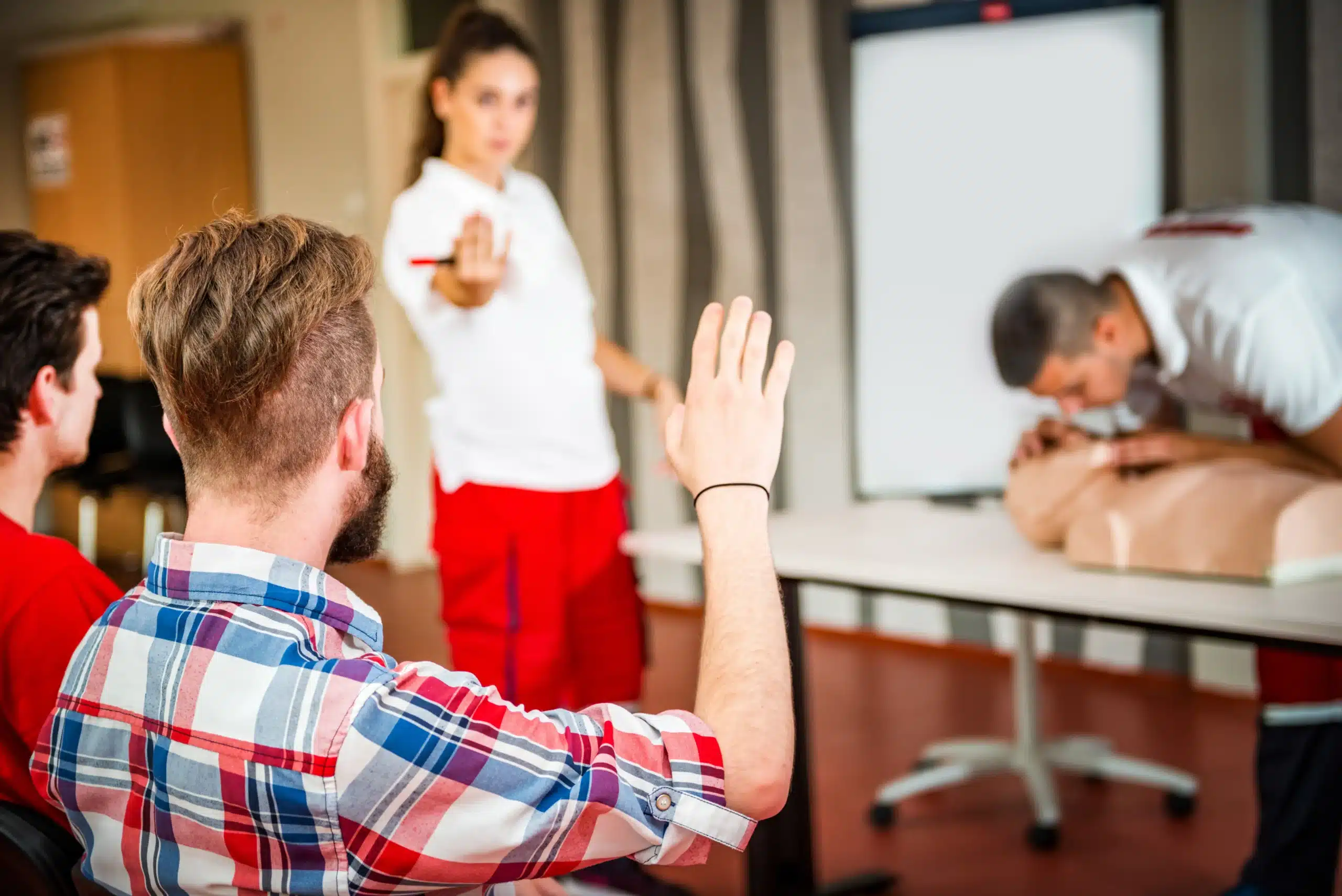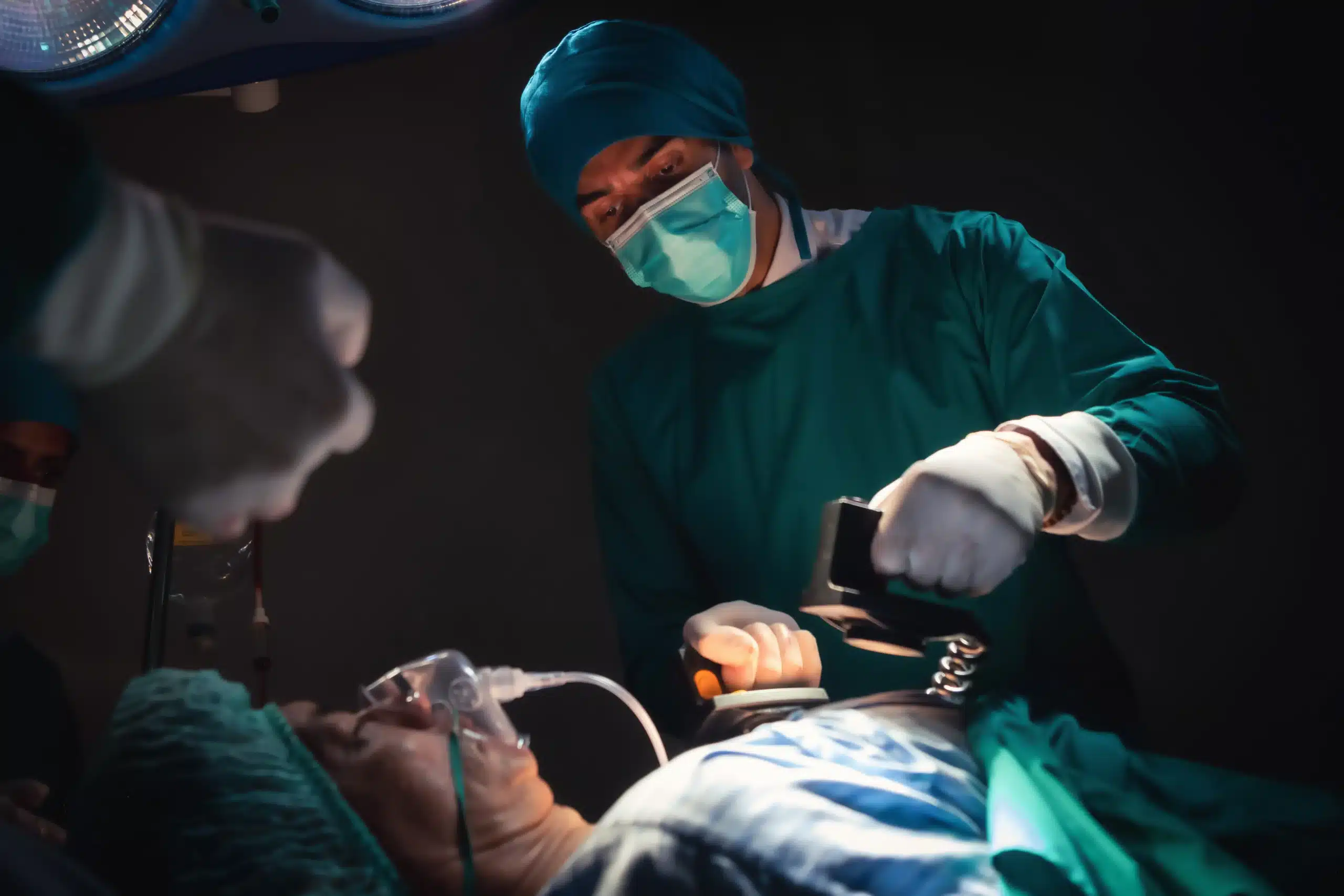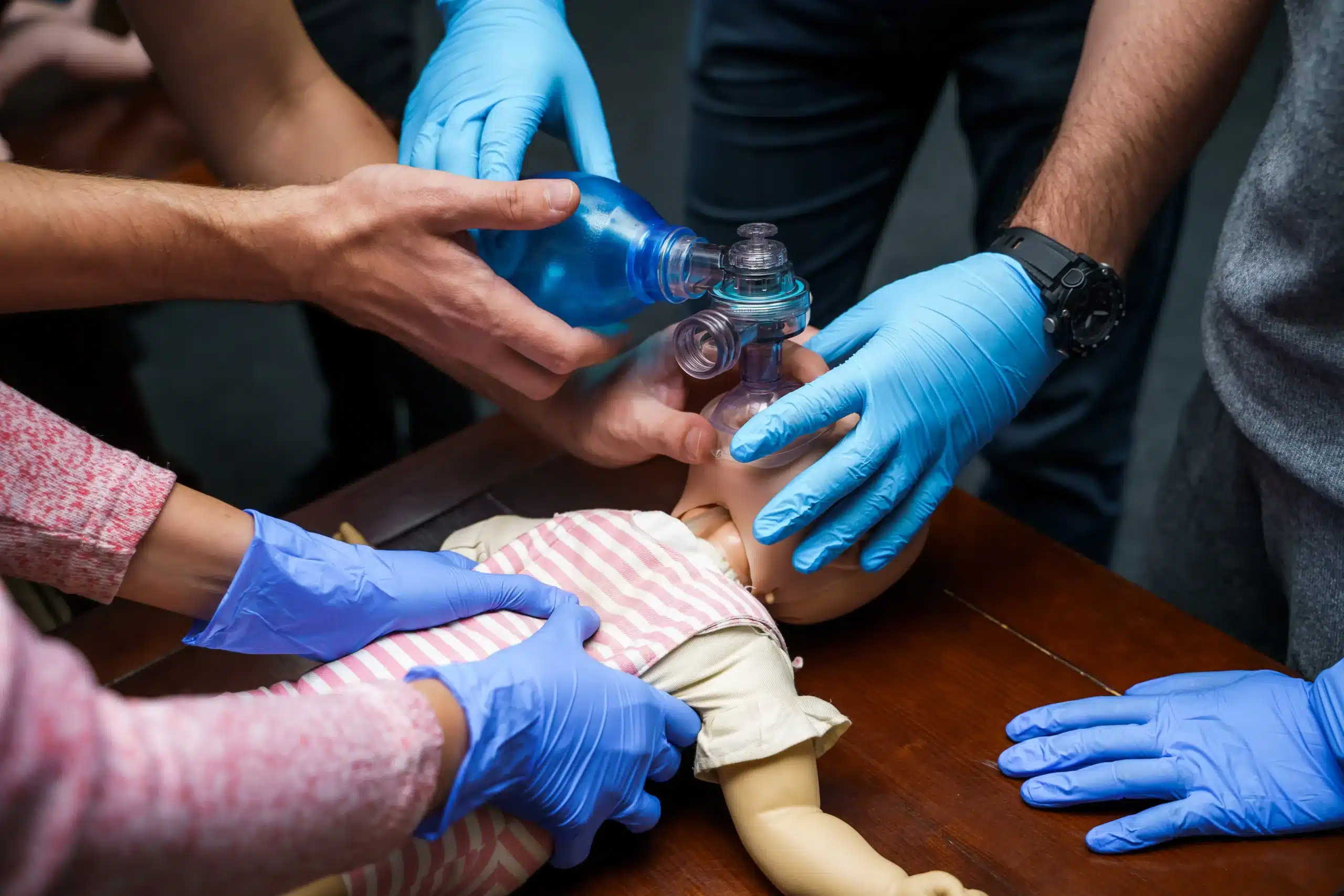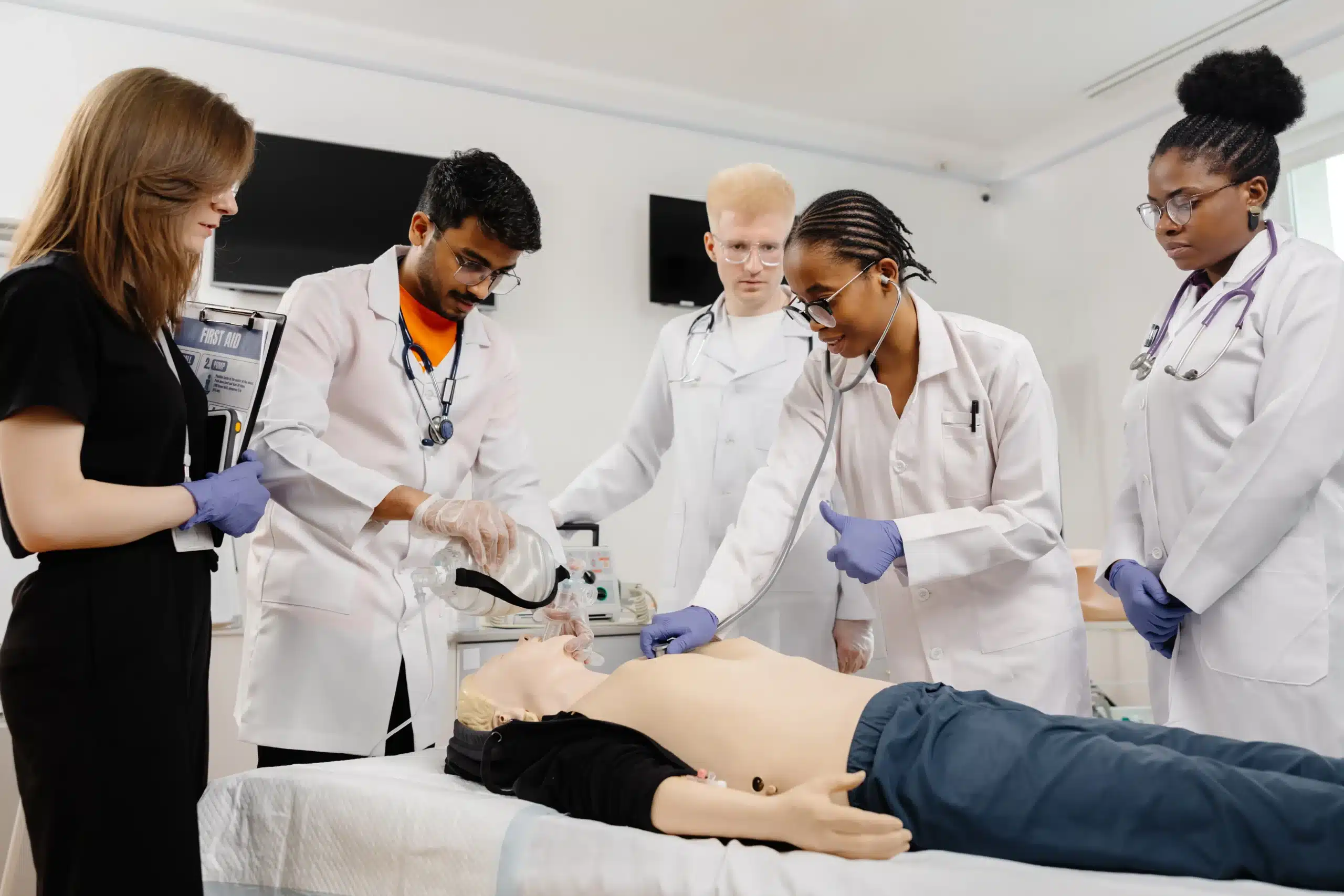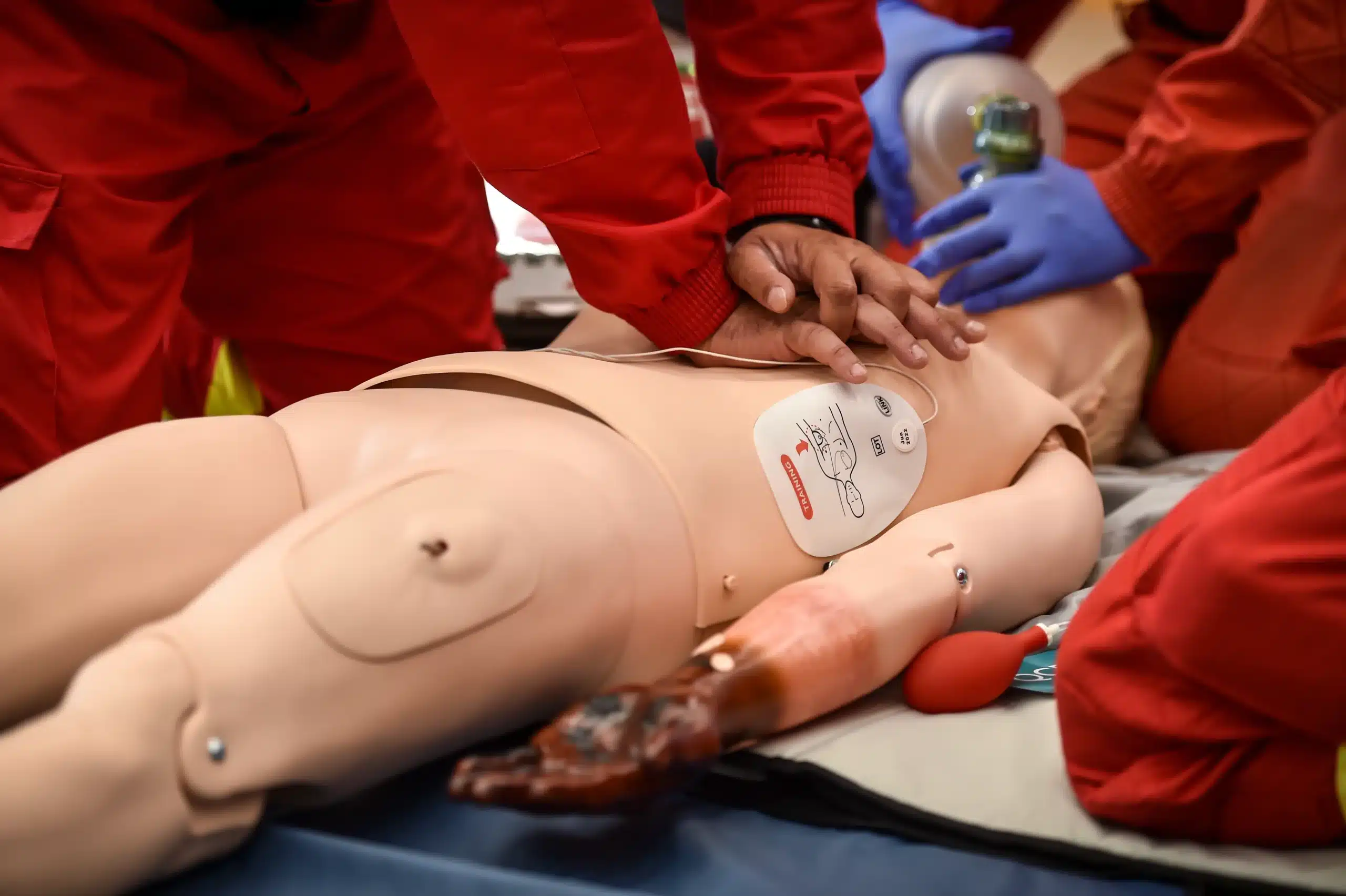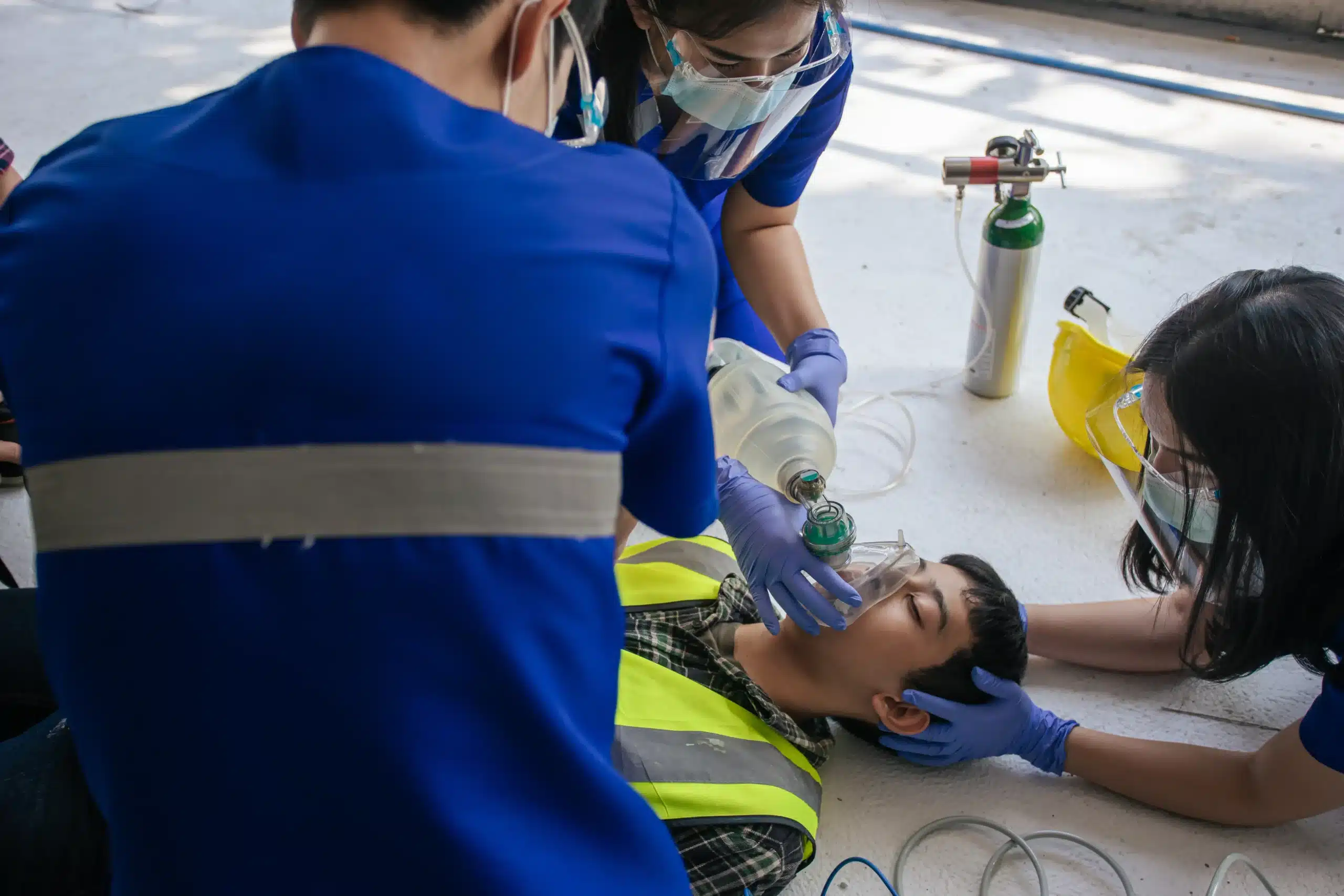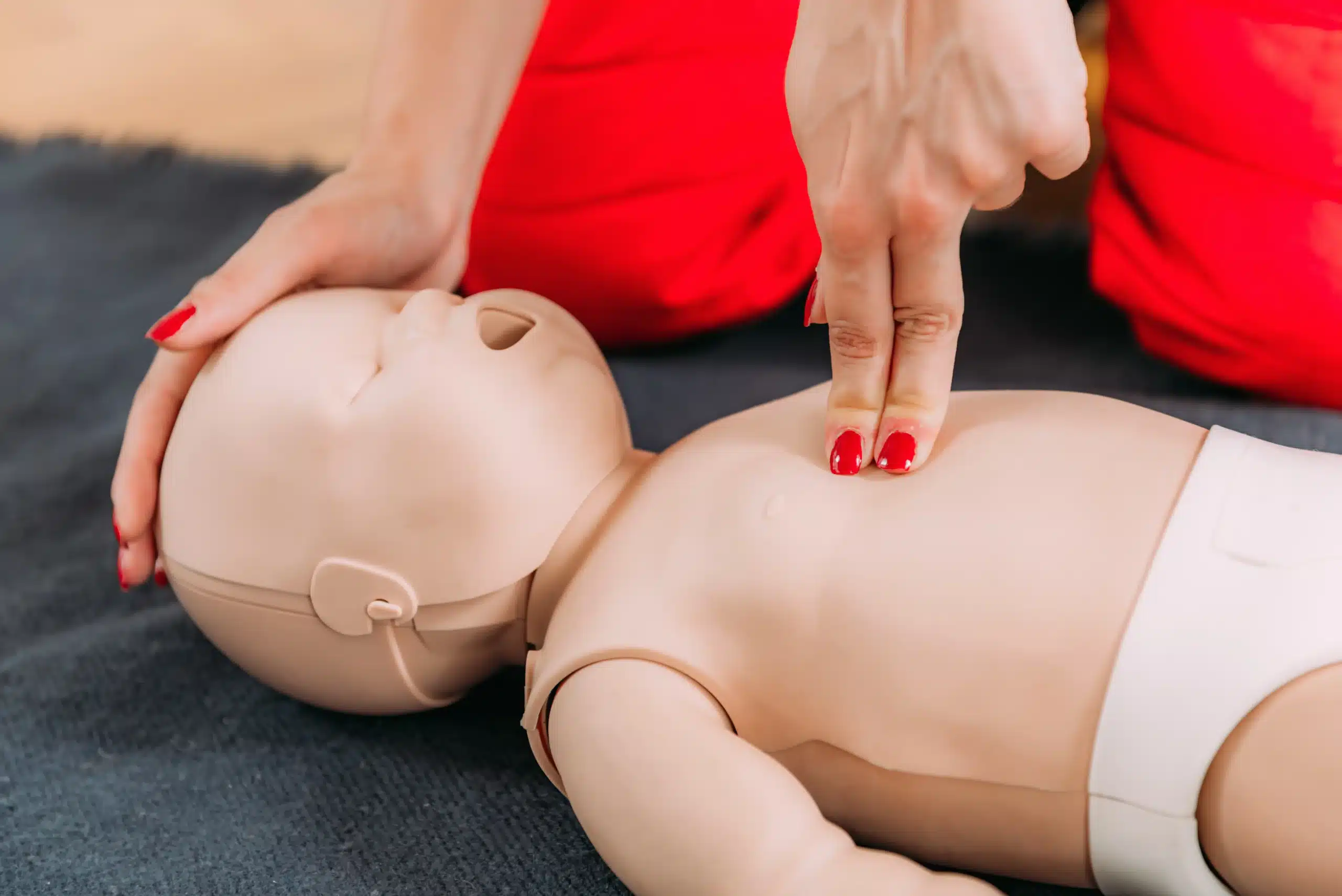Navigating the bustling streets of San Francisco, from Fisherman’s Wharf to Golden Gate Park, comes with its own set of adventures—and potential mishaps. Whether it’s a blister from exploring the city’s hills or a more serious situation, being prepared is key. First-aid kits for San Francisco residents aren’t just about bandages and antiseptic; they’re about having the right tools to handle the city’s unique challenges. This guide breaks down everything you need to know, from essential supplies for everyday mishaps to specialized items for earthquake preparedness and air quality concerns. We’ll also cover local regulations, resources, and how to customize your kit for your specific needs, ensuring you’re ready for anything San Francisco throws your way.
Key Takeaways
- Be prepared for anything: A well-stocked first-aid kit, tailored to San Francisco’s specific needs (earthquakes, air quality), is essential. Regularly check and update your supplies.
- Skills matter: Take a CPR and first-aid class. Knowing what to do in an emergency is just as important as having the right supplies.
- Connect with your community: Build relationships with your neighbors and create a family communication plan. Local connections and clear communication are crucial during emergencies.
What Goes in a San Francisco First-Aid Kit?
Building a first-aid kit for San Francisco means thinking about everyday needs and city-specific risks. Let’s break down how to prepare for both.
Urban Essentials
Start with the basics. Your kit should handle minor cuts, scrapes, and other common injuries. Think adhesive bandages, antiseptic wipes, gauze pads, pain relievers like ibuprofen or acetaminophen, and an instant cold pack. Tweezers are handy for splinters, and a small pair of scissors can help with bandage or tape removal. A good digital thermometer is also a smart addition. Keep these core supplies in a waterproof bag or container.
Climate-Specific Supplies
San Francisco’s microclimates can shift quickly. Pack layers to handle temperature changes, even within a single day. A light, waterproof jacket is essential, along with a hat and sunscreen for sunny days. Consider adding hand warmers for unexpected cold snaps. Since dehydration can sneak up on you, especially during warmer months, include a reusable water bottle in your kit. SF72 recommends keeping one gallon of water per person per day on hand for emergencies.
Local Risks: Earthquakes and Air Quality
San Francisco’s earthquake risk requires specific preparation. Include a whistle to signal for help if you’re trapped, and a dust mask to protect your lungs from debris. An N95 mask can also be helpful during periods of poor air quality, which can sometimes affect the Bay Area. The San Francisco Department of Public Health offers a comprehensive checklist for first-aid kit supplies, including recommendations for earthquake preparedness. Remember, it’s a good idea to refresh your kit every 3–5 years to ensure supplies are up-to-date and effective. Consider eco-friendly options when restocking to minimize your environmental impact.
San Francisco First-Aid Kit Regulations
Staying compliant with local regulations is key to ensuring your first-aid kit is ready for any San Francisco emergency. These regulations aren’t just about checking boxes; they’re about making sure you have the right tools when they matter most.
Local Requirements
San Francisco takes first-aid preparedness seriously. The San Francisco Department of Public Health provides a detailed checklist outlining required supplies based on Title 22 Regulations. This list covers the essentials you need, ensuring you’re prepared for common injuries and ailments. It’s a great starting point for building or updating your kit.
Compliance Checklist
Having a first-aid kit isn’t enough—you need to maintain it. The California Code of Regulations outlines requirements for keeping your kit stocked and organized. Regular inspections are crucial to ensure used items are replaced. Easy access to supplies is also essential, so you can quickly find what you need under pressure.
The Naloxone Mandate
California now requires naloxone nasal spray in workplace first-aid kits. This lifesaving medication can reverse the effects of an opioid overdose. This mandate reflects the changing landscape of first aid and the importance of being prepared for opioid-related emergencies.
Where to Buy First-Aid Kits in San Francisco
Finding the right first-aid kit is easy in San Francisco, thanks to a variety of options, both in-person and online. Whether you’re looking for a basic kit or something more specialized, you’ll find what you need.
Local Stores and Pharmacies
If you prefer to shop locally, you can find first-aid kits at most pharmacies and big-box stores throughout the city. Target offers a wide selection, from compact kits perfect for your purse to larger kits ideal for your home or car. You can order online for in-store pickup or same-day delivery for added convenience. Lowe’s also carries a variety of first-aid kits, and their “best sellers” list can point you toward popular and reliable choices. CVS Pharmacy is another convenient option, with a range of kits available online with free, fast shipping.
Online Options
Prefer the ease of online shopping? Many online retailers offer a wide selection of first-aid kits. You can find everything from basic kits to those designed for specific activities or needs. Risen Medical highlights how easy it is to find basic first-aid kits online, so you can quickly get what you need without leaving home. And, of course, don’t forget to check the online stores of your favorite local pharmacies and retailers.
Eco-Friendly Kits
If sustainability is important to you, consider purchasing an eco-friendly first-aid kit. These kits often feature sustainable packaging and products made with natural or recycled materials. Go Aid Kit offers a helpful guide to eco-friendly first-aid kits, highlighting the importance of minimizing waste and choosing products with less harmful substances. An eco-friendly kit lets you be prepared for emergencies while also being mindful of the environment.
Maintain Your First-Aid Kit
A well-stocked first-aid kit is only helpful if it’s ready when an emergency strikes. Regular maintenance ensures your supplies are in good working order and haven’t expired. Here’s how to keep your kit up to date:
Regular Checkups and Restocking
Aim to check your first-aid kit every six months. Look for expired medications, ointments, or anything that looks damaged or used. Replace these items immediately. Replenish any supplies you’ve used, even basic items like bandages or antiseptic wipes. A running list of needed replacements can be helpful. For workplace first-aid kits, California’s Occupational Safety and Health Standards Board offers guidelines that can also be useful for home kits.
Seasonal Updates
While a twice-yearly check is a good starting point, consider seasonal updates too. Stock appropriate antihistamines for allergy season. If you’re planning a camping trip, add insect repellent and other outdoor essentials. The San Francisco Department of Public Health provides a helpful checklist for first-aid supplies adaptable for different situations. Consider replacing your entire first-aid kit every 3–5 years to ensure maximum effectiveness.
Proper Storage
Easy access is key during an emergency. Store your first-aid kit in a cool, dry place, away from direct sunlight and out of reach of children. A clearly labeled, waterproof container is ideal. Use clear pouches or compartments to organize supplies for quick access. Simple organization tips can make a big difference when every second counts.
Improve Your First-Aid Skills
Knowing what to do in an emergency can make all the difference. Equipping yourself with first-aid skills goes hand-in-hand with having a well-stocked kit. Here’s how to gain confidence and prepare for anything:
Local CPR and First-Aid Courses
Hands-on training is invaluable. For in-person instruction in San Francisco, consider CPR and first-aid courses from providers like Safety Training Seminars. They offer various certifications, including BLS, ACLS, and PALS. For workplace safety solutions, including CPR and first-aid training that meets OSHA and California standards, check out Cal First Aid.
Online Training
If your schedule is tight, online training might be a good fit. The American Heart Association offers authorized programs that combine video instruction with personalized learning, allowing you to build essential skills at your own pace.
Emergency Preparedness
Beyond first-aid skills, consider your overall emergency preparedness. A 72-hour emergency kit is essential for every San Francisco household. SF72 recommends having a three-day supply of essentials for each person and pet, ensuring you’re ready for any disruption. This includes water, food, medications, and important documents.
Customize Your Kit
A standard first-aid kit is a great starting point, but consider customizing yours to fit your household’s specific needs. This could mean adding items or adjusting quantities based on your family’s health, activities, and the types of emergencies you might face.
Kits for Seniors and Chronic Conditions
If you’re preparing a kit for seniors or someone with chronic health conditions, make sure it includes any necessary medications and specific supplies. The San Francisco Department of Public Health recommends having a three-day supply of prescription medications on hand. It’s also smart to include comfort items like favorite snacks, personal hygiene products, and copies of important documents (digital or paper). Having these essentials readily available can make a real difference in an emergency.
Pet First-Aid
Don’t forget your furry friends! A separate pet first-aid kit is essential for any pet owner. Include essentials like pet food, water, a leash, any medications your pet takes, and a copy of their vaccination records. The SF72 initiative also highlights the importance of having pet supplies in your emergency kit. Adding a favorite toy or blanket can also help comfort your pet during a stressful event.
Outdoor Enthusiast Kits
If you’re an outdoor enthusiast, your kit should be equipped to handle the types of injuries you might encounter while hiking, camping, or climbing. Off Grid Warehouse offers helpful advice on building a comprehensive kit for outdoor adventures. Consider adding items like a tourniquet, hemostatic gauze, blister treatment, and insect repellent. Investing in a pre-built, OSHA-compliant kit can be a good starting point, and you can then add specific items based on your activities. Items like a C-A-T tourniquet and hemostatic gauze, while typically costing between $30 and $45, can be invaluable in a wilderness emergency.
Tech and First-Aid
Having a well-stocked first-aid kit is essential, but combining it with the right technology can significantly improve your preparedness for emergencies. Let’s explore how apps and smart devices can make a difference.
Useful Emergency Apps
Your smartphone can be a powerful tool in a medical emergency. The American Red Cross First Aid app offers expert advice at your fingertips, providing clear instructions for handling common injuries like cuts and burns, as well as guidance for more serious situations like heart attacks and strokes. With videos, quizzes, and step-by-step guides, it’s a great way to refresh your first-aid skills or learn new ones. Staying informed about local incidents is also crucial during an emergency. For real-time updates, consider the 5-0 Radio Police Scanner app, which lets you listen to live police and emergency medical service dispatches in San Francisco.
Smart Devices
Beyond apps, smart devices themselves offer valuable features. Many smartphones now include health monitoring capabilities, alerting you to potential problems like an irregular heartbeat. Smartwatches can also track vital signs, and some even have emergency SOS functions that can automatically contact your emergency contacts or emergency services if you need help. Integrating these technologies into your first-aid strategy can provide an extra layer of support and information when you need it most, contributing to a more comprehensive approach to emergency preparedness, as highlighted by the San Francisco Department of Emergency Management’s emphasis on preparedness and information (PulsePoint).
Build an Emergency Plan
A well-stocked first-aid kit is just one piece of the puzzle. A comprehensive emergency plan considers communication, community support, and access to resources during a crisis. Think of it as a personalized roadmap to help you and your loved ones stay safe in any situation.
Local Response Networks
Emergencies can disrupt everyday communication and access to essential services. Connecting with your neighbors and understanding your local resources creates a safety net. Knowing who to turn to in your neighborhood builds resilience and ensures everyone is taken care of. Consider joining a neighborhood group or attending a community preparedness meeting to strengthen your local network. Sharing information and resources beforehand can make a significant difference during a crisis.
Family Communication
Clear communication is key during an emergency. Establish a family communication plan that includes contact information for each member, designated meeting points, and out-of-town emergency contacts. Practice your plan regularly so everyone knows what to do if separated. The SF72 website recommends having a 72-hour kit for each person and pet, including comfort items like snacks and games. Don’t forget tools that will help you connect with your family and community, such as a hand-crank radio or extra batteries for your cell phone.
Workplace First-Aid in San Francisco
Having a well-stocked and accessible first-aid kit is crucial for any workplace, but especially in a bustling city like San Francisco. Beyond the everyday cuts and scrapes, workplaces need to be prepared for a range of situations, from allergic reactions to more serious incidents. This section covers the key regulations and considerations for workplace first-aid in San Francisco.
OSHA and Local Requirements
The Occupational Safety and Health Administration (OSHA) sets the baseline requirements for workplace first-aid kits across the US. While OSHA doesn’t mandate specific contents for every business, it emphasizes the importance of having supplies appropriate for the potential hazards present in your specific work environment. This means you’ll need more than just bandages and antiseptic wipes if your employees handle hazardous chemicals or operate heavy machinery.
California law goes a step further, requiring regular inspections of first-aid kits to ensure supplies are replenished and up to date. The California Code of Regulations (Title 8, Section 1512) outlines these requirements. Additionally, a new California law mandates the inclusion of naloxone, an opioid-reversal medication, in workplace first-aid kits by December 1, 2028. This reflects the state’s proactive approach to addressing the opioid crisis and ensuring workplaces are equipped to handle potential overdoses. You can read more about this important update in Safety and Health Magazine.
Industry-Specific Considerations
A one-size-fits-all approach to first-aid won’t work for every business in San Francisco. Think about the unique risks in your industry. A construction site, for example, will have different first-aid needs than a tech office. Conducting a thorough risk assessment is essential to determine the specific types of injuries and illnesses most likely to occur in your workplace. This assessment should inform the contents of your first-aid kit and ensure it’s tailored to your employees’ needs. OSHA provides helpful resources for conducting these assessments.
Remember, being prepared is the best way to protect your employees and create a safe work environment. Consider offering regular first-aid and CPR training to empower your team to respond effectively in emergencies. Safety Training Seminars offers a range of courses suitable for various industries and workplaces right here in San Francisco. Check out our BLS, ACLS, and other training options to find the right fit for your team.
Organize Your First-Aid Kit
A well-stocked first-aid kit is only helpful if you can quickly find what you need. A jumbled mess of bandages and ointments won’t do you much good in an emergency. Let’s talk about how to keep your kit organized so you’re always prepared.
Effective Labeling and Categorization
Think of your first-aid kit like a mini-pharmacy. Clear labels and compartments are key. Consider using clear pouches or small containers to separate items by category. For example, you could have a section for wound care, another for pain relief, and one for medications. Label everything clearly—even if you think it’s obvious. In a stressful situation, clear labels make all the difference. Maintaining your first-aid kit properly ensures quick access when it matters most. For common first-aid kit essentials, check out our recommendations here.
Grouping Supplies
Once you’ve categorized your supplies, think about how you’d use them in a real emergency. Group items that you’d use together. For instance, keep your antiseptic wipes, gauze pads, and bandages in the same compartment. This way, you can grab everything you need for wound care at once. This guide on organizing a first-aid kit offers helpful tips for quick access in emergencies.
Common Mistakes
One common mistake is tossing everything into a bag and hoping for the best. Resist the urge! In a true emergency, you won’t want to be rummaging through a disorganized kit. Another mistake is neglecting to check expiration dates. Medications and supplies can expire, so regular checks are essential. Properly organizing your first aid supplies is crucial for easy access during emergencies. Take the time to organize your kit now—it will save you precious time and stress later. For local CPR and first-aid training to enhance your emergency preparedness, visit San Francisco CPR Classes.
Related Articles
- Find First-Aid Classes Near Me: Your Local Guide – San Francisco CPR Classes
- Best CPR and First Aid Training in San Francisco – San Francisco CPR Classes
- CPR & First Aid Training in San Francisco: A Guide – San Francisco CPR Classes
- Pediatric CPR & First Aid in SF: A Parent’s Guide – San Francisco CPR Classes
- CPR Certification in San Francisco: Your Complete Guide – San Francisco CPR Classes
Frequently Asked Questions
What’s the most important thing to remember when building a first-aid kit for San Francisco? Think about both everyday needs and San Francisco-specific situations. A basic kit is important, but you’ll also want to consider things like earthquake preparedness and air quality concerns. Having a plan for communication and support is also key.
Are there specific regulations for first-aid kits in San Francisco I should know about? Yes, San Francisco follows Title 22 Regulations, and the San Francisco Department of Public Health offers a detailed checklist to help you stay compliant. California also has specific requirements for workplace first-aid kits, including the mandate for naloxone.
Where can I find first-aid training in San Francisco? Several organizations offer CPR and first-aid training in San Francisco. Safety Training Seminars is a good option for various certifications, including BLS, ACLS, and PALS. Online resources like those offered by the American Heart Association are also available.
How often should I check and update my first-aid kit? Aim to check your kit every six months to replace expired items and replenish used supplies. Consider a more thorough refresh every 3–5 years. Also, think about seasonal updates, adding items like allergy medication or insect repellent as needed.
What should I do if I need help during an emergency in San Francisco? Call 911 for immediate medical assistance. Familiarize yourself with local resources like SF72 for emergency preparedness information. Having a personal emergency plan, including communication strategies and a support network, is also crucial.


